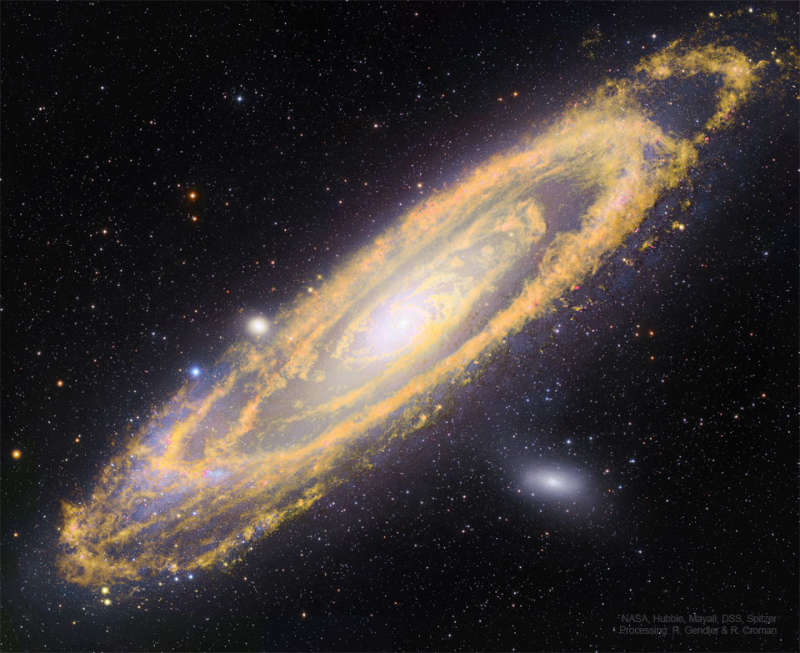Credit & Copyright: NASA,
NSF,
NOAJ,
Hubble,
Subaru,
Mayall,
DSS,
Spitzer;
Processing & Copyright:
Robert Gendler &
Russell Croman
Explanation:
This picture of Andromeda shows not only where stars are now,
but where stars will be.
The big, beautiful
Andromeda Galaxy,
M31, is a
spiral galaxy
a mere 2.5 million
light-years
away.
Image data from space-based and ground-based observatories have been
combined here to produce
this
intriguing composite
view of Andromeda at wavelengths both
inside and outside normally visible light.
The visible light
shows where M31's stars are now, highlighted in
white and blue hues and imaged by the
Hubble,
Subaru, and
Mayall telescopes.
The infrared light
shows where M31's future stars will soon form,
highlighted in orange hues and imaged by NASA's
Spitzer Space
Telescope.
The infrared light tracks enormous
lanes of dust,
warmed by stars, sweeping along Andromeda's spiral arms.
This dust is a tracer of the galaxy's vast
interstellar gas, raw material for future
star
formation.
Of course, the new stars will likely form over the next hundred million years or
so.
That's well before Andromeda merges with our
Milky
Way Galaxy in about 5 billion years.
1999 2000 2001 2002 2003 2004 2005 2006 2007 2008 2009 2010 2011 2012 2013 2014 2015 2016 2017 2018 2019 2020 2021 2022 2023 2024 2025 |
Январь Февраль Март Апрель Май Июнь Июль Август Сентябрь Октябрь Ноябрь Декабрь |
NASA Web Site Statements, Warnings, and Disclaimers
NASA Official: Jay Norris. Specific rights apply.
A service of: LHEA at NASA / GSFC
& Michigan Tech. U.
|
Публикации с ключевыми словами:
M 31 - Andromeda galaxy - Туманность Андромеды
Публикации со словами: M 31 - Andromeda galaxy - Туманность Андромеды | |
См. также:
Все публикации на ту же тему >> | |
